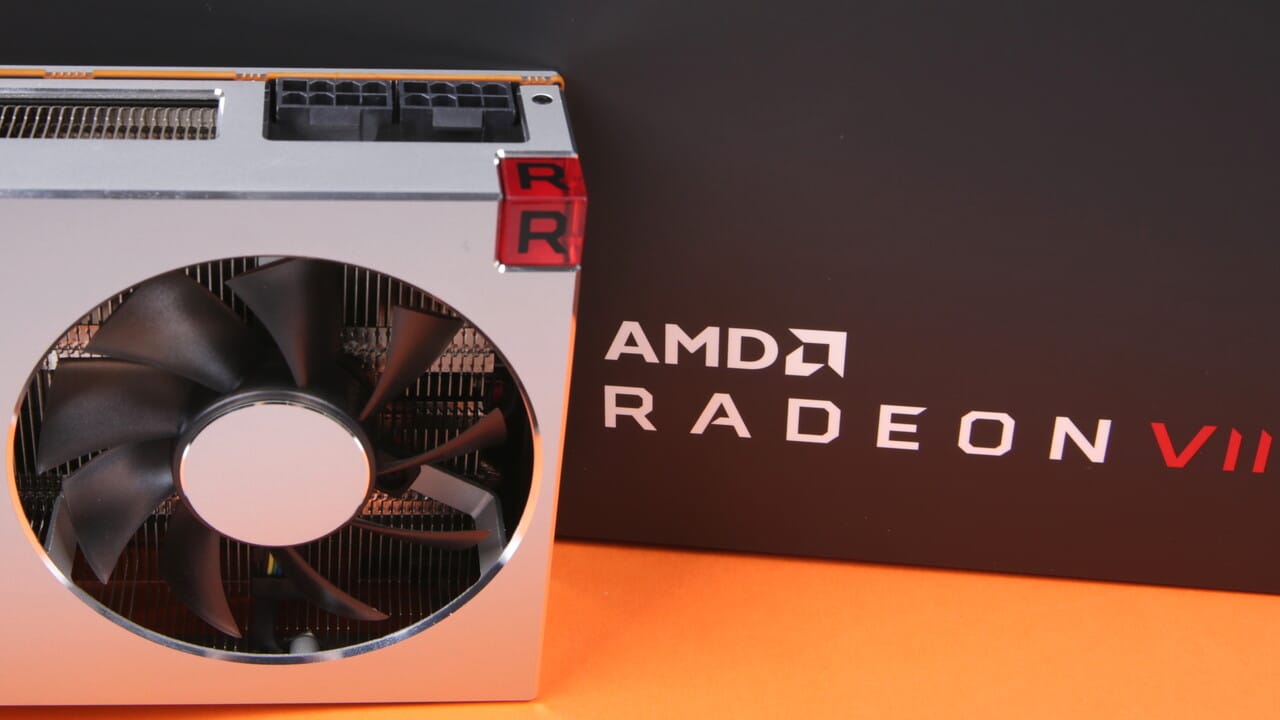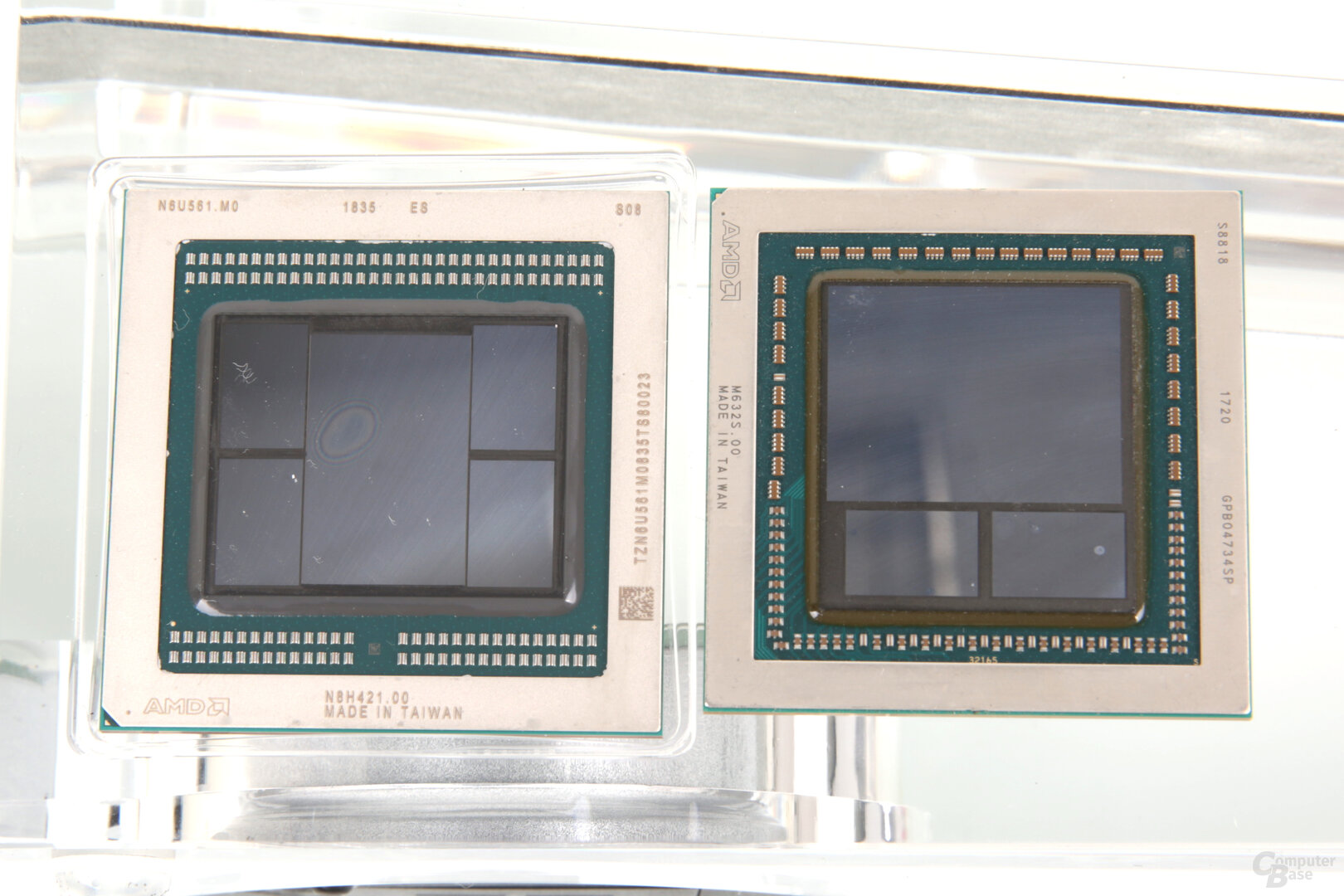– With the Radeon VII, AMD has a new flagship to attack the GeForce RTX 2080. In the test, the graphics card shows a significantly improved performance compared to the Radeon RX Vega 64, but it has a hard time against the GeForce RTX 2080. There are also difficulties with the cooling system.
The Radeon VII: AMD's new graphics card flagship
Update 02/08/2019 12:48 p.m.
2018 was not a good graphics card year for AMD. Because in the twelve months only a new graphics card made it into the trade. And the Radeon RX 590 has become a good mid-range model, but in the end it is only a slightly improved Radeon RX 580. AMD was missing real innovations last year, while Nvidia with the GeForce RTX series based on Turing has released several completely new graphics cards.
After the low of 2018, a high should follow in 2019, because AMD is planning several new graphics cards. Including "really new" products, because with the still rather mysterious Navi either a completely new or a revised GCN architecture is pending. Until Navi appears in the second half of the year, a new flagship should temporarily attract attention: The Radeon VII announced at CES.
No other graphics card was so creative in naming it before
AMD does a lot differently with the Radeon VII. It starts with the creative name, which has several meanings. It is the first GPU to be manufactured using the 7 nm process (VII = 7). And the second Vega generation (VII = Vega 2). And even the release date is in the name (VII = 7. 2.). But even apart from the naming, it is an unusual graphics card.
AMD: The performance of an RTX 2080 for 729 euros
Because Vega 20 is a GPU that was actually developed for professional purposes. Since it is still Vega, there is nothing technically new. But the 3D accelerator does a lot different than its predecessor and, due to the better production, should be significantly faster than the Radeon RX Vega 64. AMD speaks of the performance of a GeForce RTX 2080. The cost point is 729 euros. In the test, BitcoinMinersHashrate clarifies whether the Radeon VII is a serious alternative or just an interesting product.
A professional Vega 20 on the wrong track
The centerpiece of the Radon VII is the first Vega 20 GPU manufactured in the 7 nm process, which is somewhat more complex than Vega 10 with 13.2 billion transistors, but significantly smaller with 331 mm² to 495 mm². Vega is used again as architecture, but it is the "second Vega generation" that offers small improvements.
New in Vega 20 is another calculation format. Already Vega 10 on the Radeon RX Vega mastered not only the normal calculation accuracy FP32 but also fully accelerated FP16, INT8 and INT4. New at Vega 20 is an equally fully accelerated FP64. The maximum double-precision performance does not exist on the Radeon VII, which is reserved for the professional Radeon Instinct MI50 and MI60. Since the Radeon VII is not only aimed at gamers, but also at content creators, AMD leaves it at a ratio of 1: 4 (3.46 TFLOPS) when reducing the double-precision performance. This means that the Radeon VII has a significantly better FP64 performance than the Radeon RX Vega 64 (0.84 TFLOPS) and the GeForce RTX 2080 (0.35 TFLOPS), which only support DP in the ratio 1:16 and 1:32. The expanded computing formats on Vega 20 clearly show that the GPU is actually intended for professional purposes such as HPC. Because double precision is required there, but not at all in consumer applications. There FP32 and sometimes FP16 are sufficient.
Async Compute is said to be fast, but PCIe 4.0 is missing
In addition, AMD wants to have improved on Vega 20 Async Compute, so that the performance with DirectX 12 and Vulkan should be higher. The developer does not reveal exactly what AMD did. There have also been further optimizations on Vega 20 to further increase clock speeds and reduce latency. In addition, the integer and floating point accumulators (required for additions and multiplications) are said to have been optimized for improved compute performance. Vega 20 is also the first GPU to support PCIe 4.0, which is also reserved for professional models and has been downgraded to PCIe 3.0 on the Radeon VII.
The architecture is still Vega
In connection with the advantages of 7 nm production, Vega 20 should work faster than Vega 10, although the number of processing units has remained the same. The actual architecture has also remained untouched, so that there should not be any major advantages – these will only be found in special cases. There is also no news regarding the highly sought-after primitive shaders, including the next-generation geometry path, that have found their way into Vega 10. Since nothing has changed in this regard for a year and a half – and the primitive shaders therefore neither work automatically nor can developers be controlled manually – it can be assumed that they will not work as planned on Vega. This is something that BitcoinMinersHashrate has also heard under the hand. Apparently there is a fundamental (and unexpected for AMD) problem with primitive shaders that should only be fixed with Navi.
The basic structure of Vega 20 corresponds to that of Vega 10. There are a total of 64 compute units and thus 4,096 shader units. With the same cycle, Vega 10 and Vega 20 thus have the same computing power. However, full expansion is not used on the Radeon VII, four CUs are switched off. With 60 CUs and thus 3,840 ALUs, the consumer graphics card is placed exactly between Radeon RX Vega 64 (64 CUs) and Radeon RX Vega 56 (56 CUs) and thus corresponds to a Radeon Instinct MI50. The Radeon VII compensates for the disadvantage with a higher clock. The maximum possible clock rate is 1,800 MHz, in games it should usually be around 1,750 MHz. In contrast, a Radeon RX Vega 64 usually works in games with 1450 to 1500 MHz.
The first consumer graphics card with 16 GB and 1 TB / s
With Vega 20, the memory including the interface was significantly bored out. Instead of two HBM2 stacks, there are now four. This automatically doubles the memory interface to 4,096 bits. Since AMD allows the memory on the Radeon VII to work at 1,000 MHz, the memory bandwidth of just over one terabyte per second is more than twice as high as on the Radeon RX Vega 64. And also generally higher than on any other graphics card including Nvidias Titan RTX. The memory expansion is also doubled, because it remains at 4,096 MB per stack. The Radeon VII thus offers 16 GB of storage, the double 32 GB is only available for the professional models. Since the ROPs have been linked to the L2 cache instead of the memory interface since Vega, they are not doubled in Vega 20. There are still a total of 16 pixel engines with four ROPs each, making a total of 64 ROPs.
AMD specifies 300 watts for the Radeon VII, and 295 watts for the Radeon RX Vega 64. Unlike the Radeon RX Vega, the Radeon VII does not always run to the maximum allowed value. As the measurements show, the power consumption of the Radeon VII is somewhat lower than that of the predecessor despite a different value due to the more efficient 7 nm production despite the higher speed.
On the next page: The Radeon VII in detail

















